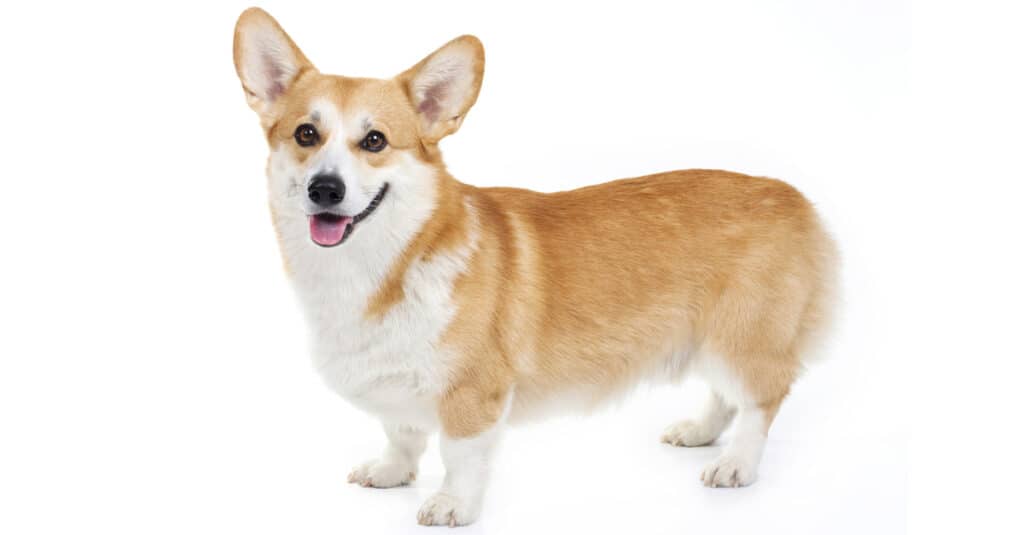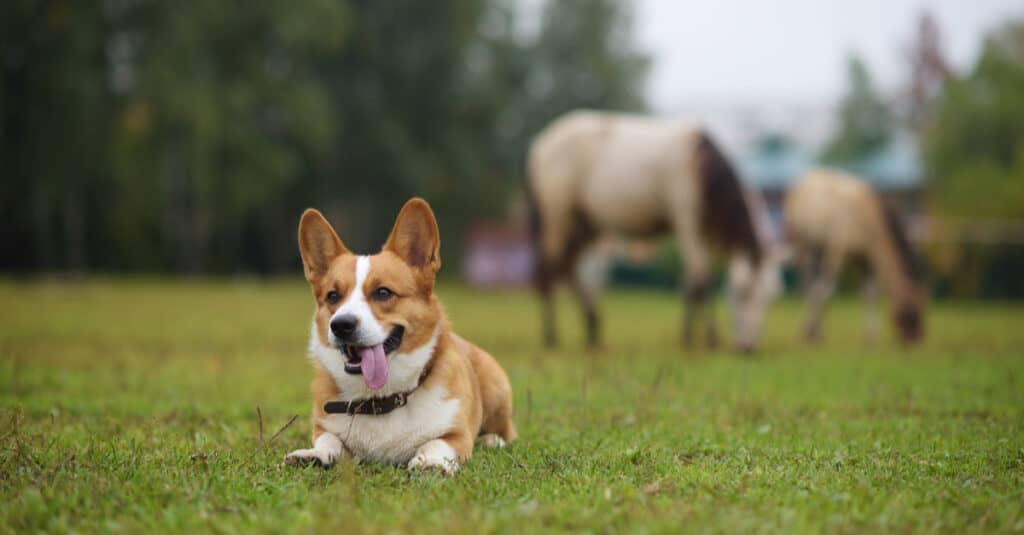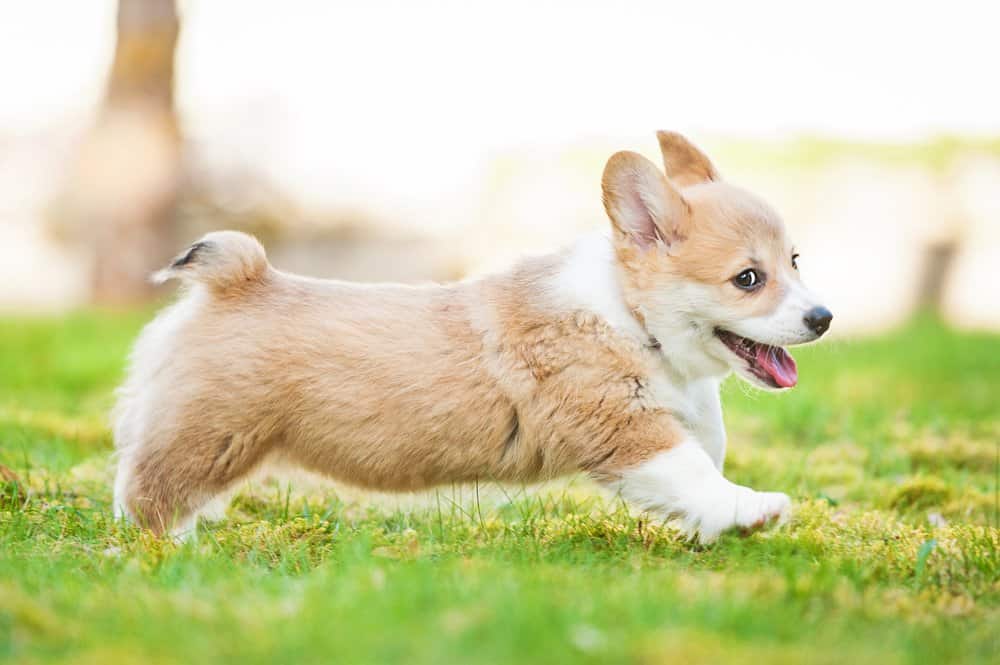Corgis have amassed a cult following on the web. The breed became popular because of Queen Elizabeth II’s fondness for them. The Royal Corgis, as they are fondly called, are Pembroke Welsh Corgis, which were not popular at the time Queen Elizabeth II’s father, King George VI, approached a breeder about them.
The Queen loved Corgis since she was a child. Since then, she has owned more than 30 Corgis. She reportedly stopped breeding them in the 90s but kept two “dorgis” — a cross of Dachshund and Corgi — to keep her company.
Corgis were originally bred to herd cattle, sheep, and horses. Theses short-legged pups are active and intelligent dogs, making them a great companion for senior citizens and children. Corgis are family dogs, and they get along well with other pets.
It is believed that the Corgi ancestry dates all the way back to the 10th century. It is unknown if they were descended from Sweden and brought over by Vikings or if their ancestors are of present day brought over by the Welsh. Either way, we are happy Corgi’s exist!
The two different types of Corgis are the Pembroke Welsh Corgi and the Cardigan Welsh Corgi. They have four different coat colors and markings.
| Height | 10 to 12 inches |
| Weight | 20 to 30 pounds |
| Lifespan | 10 to 14 years |
| Color | Black/tan, fawn, sable |
| Drooling | Low |
| Hypoallergenic | No |
| Classification | Herding |
| Fun fact | Corgis are over 3,000 years old |
| Types | Pembroke Welsh and Cardigan Welsh |
| Lineage/origin | German Teckel lineage for the Cardigan and Nordic Spitz for the Pembrokes |
Description and Size
People often confuse the two breeds of Corgis, although the Pembroke Welsh is definitely more popular because of Queen Elizabeth II. The Cardigan Welsh, however, is older by more than 2,000 years old. Most Cardigan Welsh owners would have to explain why their Corgis look different than Queen Elizabeth II’s tail-free Pembrokes.
The Cardigans and Pembrokes both herd the cattle and guard the barnyard. They also both worked with farmers. However, the Cardigans came from the rocky terrain of Cardiganshire in southwest Wales, while Pembrokes were from the flatter terrain of Pembrokeshire in southern Wales.
The Cardigans are from the German Teckel lineage, where the Dachshund also originated. The Pembrokes are descendants of the Nordic Spitz breeds. In terms of appearance, the breeds are both dwarf with large heads and heavy and long bodies.
They also have short legs. The first difference is the tail — the Cardigan has a fox-like tail while the Pembrokes have tails closer to their bodies.
They both have upright ears, but the Cardigans’ ears are larger and more rounded. Cardigans are also larger and have heavier bones, with their males weighing up to 38 pounds. Pembroke males weigh only up to 30 pounds.
Cardigans are also curvier and are more rotund with a sloping rear. On the other hand, Pembrokes have oval bones. They have a squared-off rear that makes them look more linear and rectangular.
The Cardigans have more colors. They come in brindle, blue merle, black and white, and red and sable with white markings. Pembrokes are more consistent with sable, red, and tricolor markings.

Pembroke Welsh Corgi
©HelenaQueen/Shutterstock.com
Original Jobs and Roles
Both the Cardigans and Pembrokes were bred to herd livestock. What kind of livestock do they herd? Everything, from ducks to sheep to cattle. They are often referred to as “heelers” because they can herd cattle by nipping at their heels.
So, where do these Corgis come from? Historians believe this breed originated in the 9th or 10th century. These could have been companions of Scandinavian raiders. Apparently, these raiders brought them to the British Isles thousands of years ago. The Pembrokes, in particular, came to Wales with the Vikings.
The Swedish Vallhund is believed to be an ancestor of the Cardigans and Pembrokes. Many experts believe the Vallhund was crossbred with native Welsh dogs to develop what people now know as Welsh Corgis.
However, to come up with a new breed great for herding, the breeders only chose Vallhunds and Welsh dogs with an interest or skill in herding. Thus, the Welsh Corgis have engrained herding instinct.

This farm dog is fearless and vigilant despite its small size.
©Dmitriy Kostylev/Shutterstock.com
Diet
Corgis are fond meat-eaters. Since they initially worked hard, they needed to eat heavier meals than other breeds. This stayed with them to this day, even though they are tamer. In the past, Corgis fed on rabbit, beef, and other meats local to their hunting places. They also ate vegetables, such as potatoes, carrots, cabbage, and fish.
This breed should be able to eat table food as long as they are properly introduced to it. Give them small amounts in cooked form to slowly get them used to human food. As a general guideline, introduce table food in 10 to 25% of their weekly diet.
However, since Welsh Corgis are often overweight, you should watch what they eat. Their diet should consist of proteins, healthy fats, vegetables, and ground bones. It should be focused on essential vitamins and minerals. Use this as a guideline for how much your Corgis should eat: a 25-pound Corgi should eat 870 calories daily.

Because they’re bred to expend a high amount of energy, Corgis are prone to obesity
©Rita_Kochmarjova/Shutterstock.com
Habitat
It is not clear where Corgis came from. Many believe that the Cardigans came from the rocky terrains, while the Pembrokes are from flatter and easier terrains. These days, they originate from Wales.
Legends and Myths about Corgis
There are myths and legends surrounding the origin of Corgis. The truth is that they probably came from Flemish weavers in the 1107 AD. The Flemish migrated to Wales, bringing their Corgis with them.
One legend, however, said that two children playing in the forest came across a funeral for a fairy. The fairies gave the children two Corgis that they brought home and raised. This is the same lineage of Corgis that people know today. Welsh legends said that the fairies used Corgis as horses. The fairies would ride on the back of the Corgis, using their haunches for their saddles.
Corgis in Modern Times
Corgis are one of the most recognizable and Instagrammable dog breeds worldwide. Thanks primarily to Queen Elizabeth II, they even appeared on the cover of Vanity Fair. They were often photographed with the Queen of England, which led to their removal from The Kennel Club’s list of Most Vulnerable Dog Breeds in 2018.
Initially, the Pembrokes and Cardigans were categorized as one breed by The Kennel Club. Corgi owners disputed this classification since Pembroke owners felt their pups are more superior to the Cardigans. People favor the Pembrokes, too, and this showed in rankings and scorings.
Cardigan owners felt slighted and broke away from the group. The Pembroke-loving group worked harder to make their dogs more distinct from the Cardigans. These days, the Pembroke Corgis are top-rated companion dogs. The Cardigans are not so lucky, and it is rare these days to find a dog owner who opts for a Cardigan than a Pembroke.
Similar Dog Breeds
- Australian Cattle Dog: These dogs stand 18 to 20 inches in height and 35 to 45 pounds in weight. They have a sturdy and compact body, but they are short. They came from dingoes and Dalmatians.
- Australian Shepherd: These medium-sized pups are lithe and agile. They are descended from the shepherd dogs of the Basque region in Spain and France.
- Border Collie: Considered the world’s outstanding sheep herder, these dogs are great at directing herds. They are 19 to 22 inches in height and 31 to 50 pounds.
- German Shepherd: This breed is one of the most recognizable dogs in the world. They are massive at 75 to 95 pounds. Standing at 24 to 26 inches, these dogs are well-muscled.
FAQs
What is the legend of the Welsh Corgi?
According to Welsh legends, the Corgis are gifted to two children by mourning fairies. The children took them home and raised them to be the Corgis the world knows today.
What is the difference between the Cardigans and Pembrokes?
The Cardigans have a fox-like tail, while the Pembrokes’ tails are closer to their bodies. Cardigans are also curvier and more rotund than the Pembrokes. Their personalities, however, are the same. They are both herd dogs who are great with families and young children.
Why are Corgis also called “heelers”?
This is because they nip at the animals’ heels to get them to follow them when herding.
Why did Corgis become so popular?
In 2014, they were placed on The Kennel Club’s list of Most Vulnerable Breeds. They were removed in 2018, following a boom in popularity. This was after the world became fascinated with Queen Elizabeth II’s relationship with her Corgis.
How did Queen Elizabeth II get involved with Corgis’ popularity?
It is common knowledge that the Queen of England loved Corgis in particular. Many videos are evidence of this. She has had her Corgis since she was little. However, in the 1990s, she stopped breeding them and decided to keep only two Corgis, which are already a mix of Dachshund and Corgi.
What kind of Corgis are the popular ones today?
The Pembroke Welsh Corgis are the ones you see today on Instagram. The Pembrokes are the Queen’s favorites. However, the Cardigan Welsh Corgis are older by more than 2,000 years. This breed isn’t as popular as the Pembroke because they broke away from The Corgi Club.
Next Up…
- Dorgi vs Corgi: 5 Key Differences – Dorgi and Corgi might sound similar, however, there are some key differences! Keep reading to find out!
- The 6 Best Pet Loss Sympathy Gifts – Many people lose pets, and it can be like losing a part of your family. Find out the best pet loss sympathy gifts.
- Corgi Lifespan: How Long Do Corgis Live? – Corgis are their own special breed to begin with, so how long do they normally live for? Click to find out!
The photo featured at the top of this post is © iStock.com/Tatomm
Ready to discover the top 10 cutest dog breeds in the entire world?
How about the fastest dogs, the largest dogs and those that are -- quite frankly -- just the kindest dogs on the planet? Each day, AZ Animals sends out lists just like this to our thousands of email subscribers. And the best part? It's FREE. Join today by entering your email below.
Thank you for reading! Have some feedback for us? Contact the AZ Animals editorial team.






